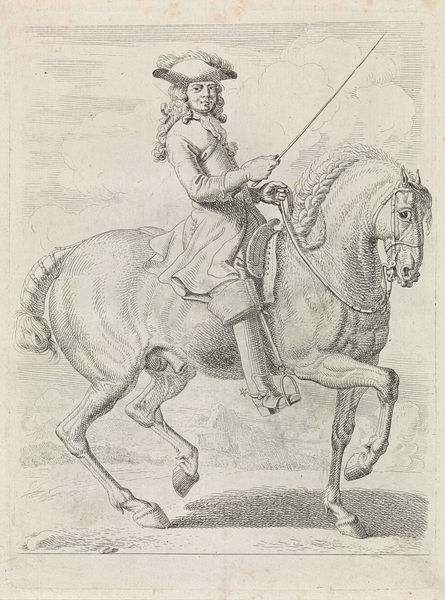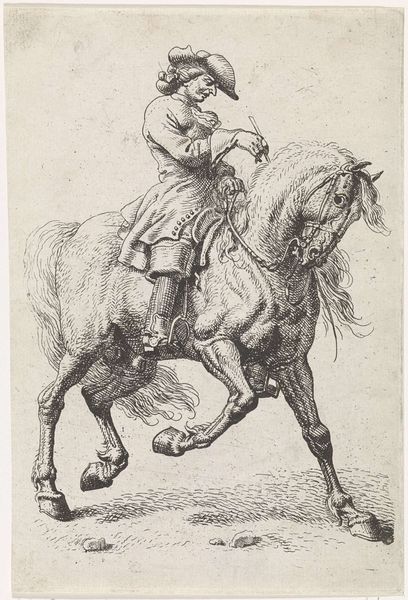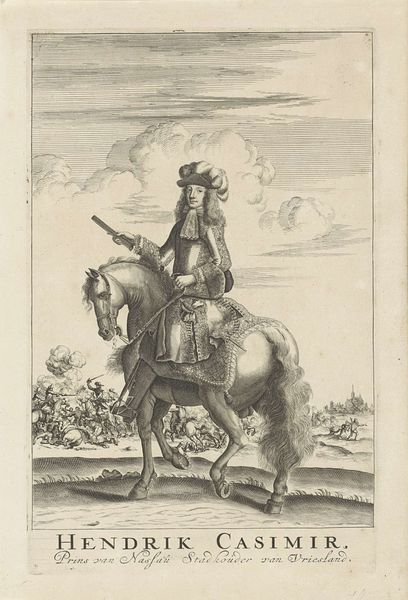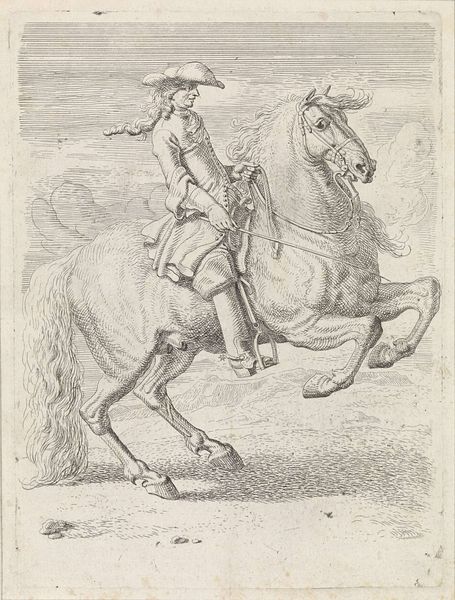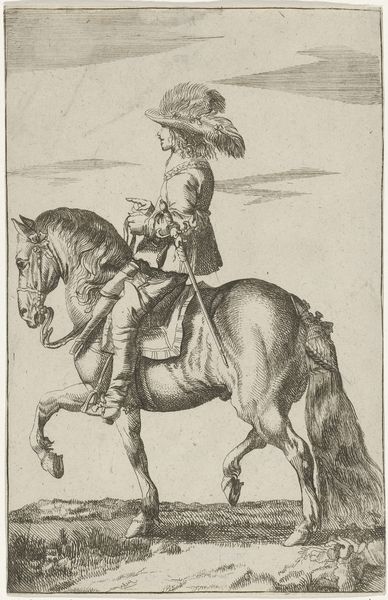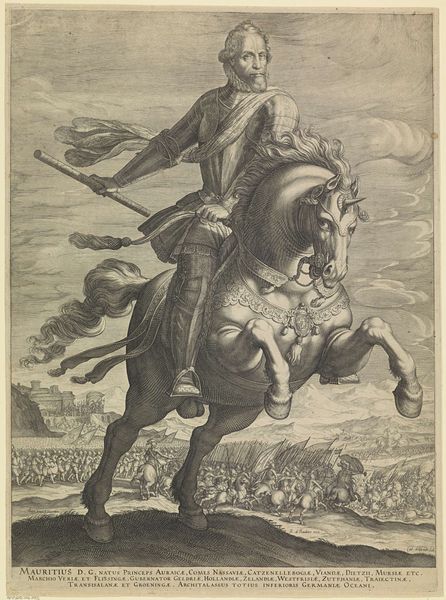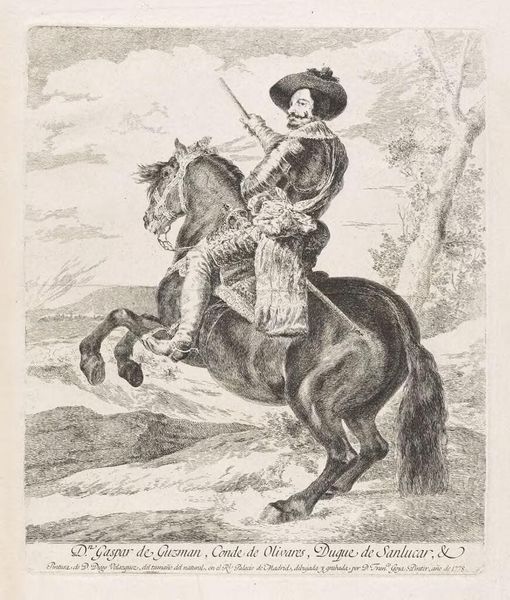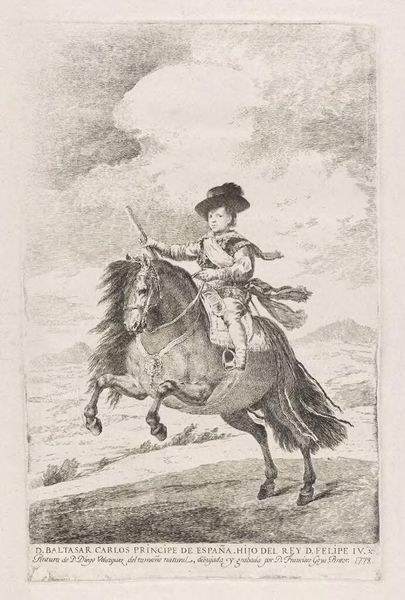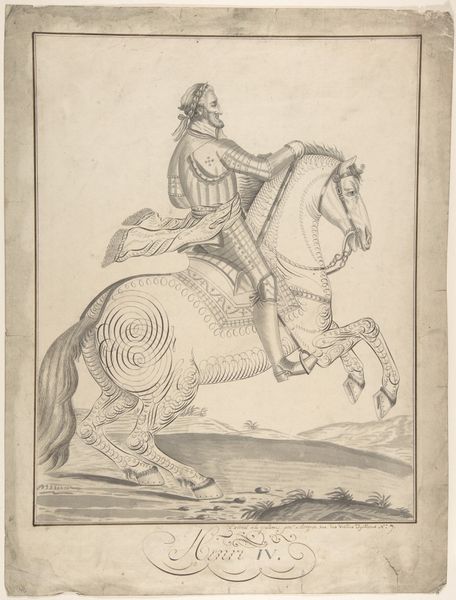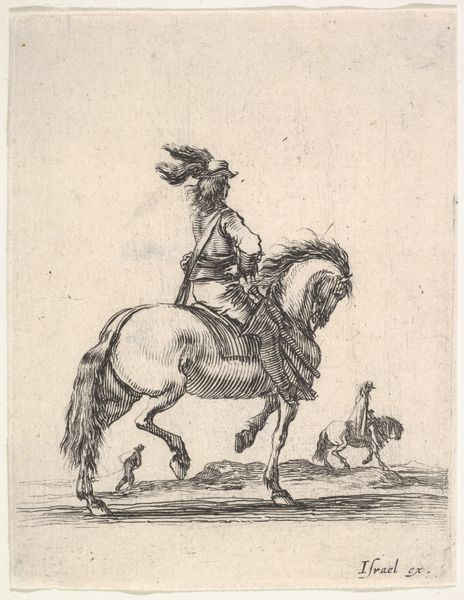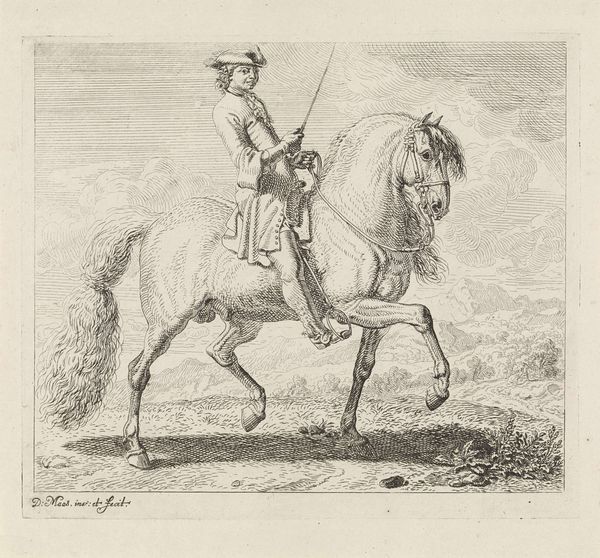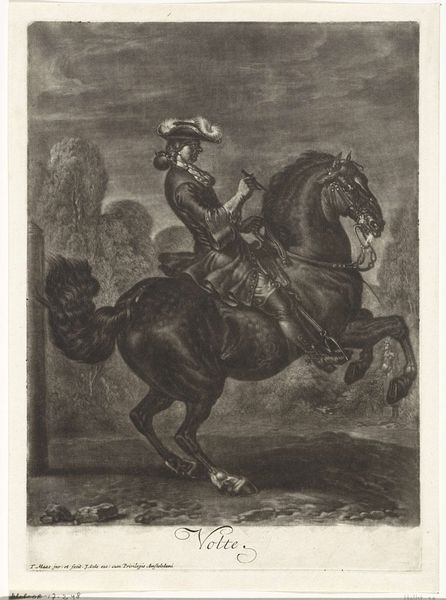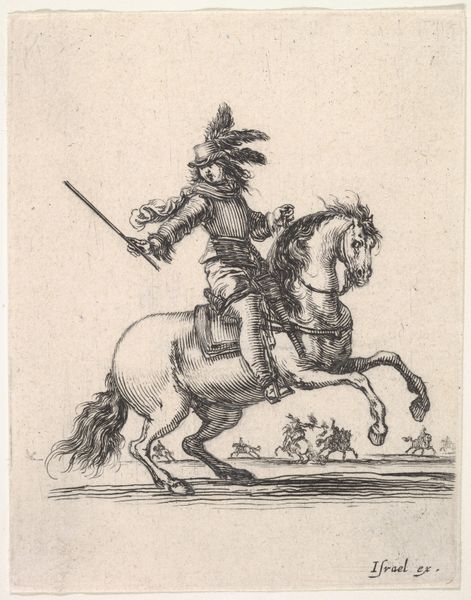
print, metal, engraving
#
portrait
#
baroque
#
dutch-golden-age
# print
#
metal
#
history-painting
#
engraving
Dimensions: height 208 mm, width 135 mm
Copyright: Rijks Museum: Open Domain
Editor: So, here we have a 1655 engraving, likely on metal, called "Ruiterportret van Willem III, prins van Oranje," or Equestrian Portrait of William III, Prince of Orange. I find the contrast between the youthful figure of the Prince and the very formal, almost performative pose of the horse quite striking. How do you interpret this work? Curator: It’s fascinating, isn’t it? The piece presents Willem III as a figure of authority, even at a young age. But consider the historical context: this portrait wasn't just about celebrating a child; it was about reinforcing the power and legitimacy of the House of Orange during a tumultuous political period in the Dutch Republic. Think about the symbolism embedded here. The rearing horse – usually a symbol of power, military strength – yet the boy looks…small. Ineffective. Almost symbolic. Does that tension not strike you as unsettling? Editor: I hadn’t thought about the instability of the time. So, you’re saying that the portrait might be less about Willem himself, and more about projecting an image of strength despite underlying vulnerabilities? The trappings of power overshadowing the reality? Curator: Exactly. Look closer: the engraving style itself contributes. The fine lines, the detailed rendering – it evokes a sense of meticulous control, almost trying to compensate for the chaos that might be lurking. Ask yourself, who commissioned this portrait and why? And how might ideas about gender and leadership play into this presentation of young William? The details of his clothing. Who made the conscious decision to have him displayed in that specific regalia? Editor: That's a powerful way to reframe it. I was so focused on the aesthetics, I missed the potential for social commentary! Curator: Precisely! Now consider how this image, created in 1655, resonates with contemporary ideas about leadership and representation, what questions about the spectacle of power does it raise for us today? Editor: It definitely makes me see it differently, much more than just a portrait. It feels like a statement, carefully constructed for a very specific audience and purpose. Thank you! Curator: It’s been a pleasure to see it through your eyes. Art is always a product of its time, reflecting the social, political and economic pressures under which it was produced. Always delve deeper!
Comments
No comments
Be the first to comment and join the conversation on the ultimate creative platform.
